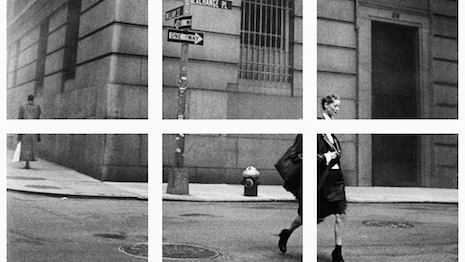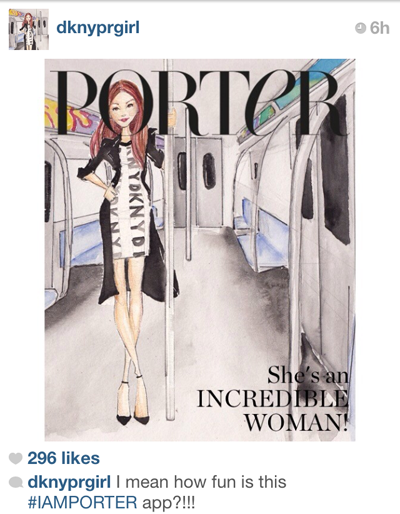As fashion houses make the transition from one creative director to another, the opportunity at a fresh start presents itself in both design and social media presence.
Brands including Brioni, Saint Laurent and DKNY have literally wiped the slate clean as they welcomed a new artistic vision into their brand, deleting all trace of their former creative directors or brand managers on Instagram or Twitter. While this enables brands to focus on creating a cohesive presence under a new vision, this tactic destroys elements of a brand’s history.
“New creative directors are hired to bring a new creative vision to a brand, and in that sense, their job is to wipe the slate clean,” said Ana Andjelic, senior vice president and global strategy director at Havas LuxHub. “They are brought in to make a brand more culturally relevant, more appealing to consumers and/or more financially successful.
“But brands’ communication teams seem to have taken this too literally,” she said. “They also show a thorough failure to understand what social media are about.
“Instagram, Snapchat, Twitter and even Facebook are all momentary, instantaneous. They don’t exist beyond a moment. They are reflection of the now. No one cares about a Tweet from a month ago or an Instagram post from last year. Snapchat doesn’t even allow us to care.
“There is no point in deleting legacy posts. For one, no one cares, and second, it’s bad professional practice. The message you are sending is that you want to undo everything that a previous creative director has done. That shows a lack of respect.”
Leaving no trace
Brioni cleared out its Instagram the day it announced Justin O’Shea’s appointment as creative director, leaving a solitary picture of the new hire (see story).
Considered at the time to be an unconventional choice, as he had come from the world of retail, Mr. O’Shea has taken Brioni in a decidedly rock ‘n’ roll direction, casting Metallica in his first campaign and remaking the Brioni logo in a gothic font.
Saint Laurent similarly let go of its Instagram footprint as Hedi Slimane left after four years at the helm. Mr. Slimane is credited with rebranding the house. He first revised its name from Saint Laurent to Saint Laurent Paris, secondly embraced a rocker aesthetic which often saw music icons in campaigns and reestablished the brand’s couture collection (see story).
After Mr. Slimane exited the brand in April, Saint Laurent was quiet on its social channels, sharing nothing but a headshot of new appointment Anthony Vaccarello on April 6. In June, Saint Laurent began teasing the first campaign envisioned by Mr. Vaccarello, and as of press time, the campaign remains the only content on Saint Lauren’s Instagram (see story).

Saint Laurent Instagram account
“I don’t think that we should necessarily link the continuity of social media accounts with a brand heritage,” Ms. Andjelic said. “Sure, social media accounts are a modern ‘archive’ of looks and brand imagery, but if they are done well, they are also more of a reflection of consumers’ desires, street looks and an embodiment of fashion as material culture.
“They are more outward than inward facing – they are an active cultural dialogue,” she said. “In that sense, wiping a brand’s social media account away means deleting part of this brand’s dialogue with culture and with consumers. Why would they want to do that?”
The same strategy has been used when the face behind a brand’s Twitter account departs.
U.S. fashion brand Donna Karan International completely overhauled its Twitter and Instagram accounts surrounding the departure of longtime employee Aliza Licht, who spoke for the brand on social media as DKNY PR Girl.
The brand deleted all of the past posts from the two platforms, which represented both Donna Karan Collection and the diffusion line DKNY, as part of a renewed social strategy. With DKI’s social media presence inherently tied to the PR representative’s personality, this transition will be a time of rebuilding for the brand’s online persona (see story).
Taking away traces of a brand’s past under another creative director can offer a chance at a fresh start. However, at the same time, it destroys any brand image and voice the label had developed on the platform.
“It’s a shame that these brands have chosen such a permanent removal strategy as they’ve chosen to erase some of the history of the brand and how it’s evolved,” said Dalia Strum, professor at the Fashion Institute of Technology and founder of Dalia Inc. andMommysToolbox.com, New York.
“There’s something to be said about the brand’s story, their relevancy and how do they emotionally connect to their customer,” she said. “Essentially, those personalities were the aspirational clientele of the brand and they could be utilized moving forward.
“As these brands have spent years curating their brand personalities, it would be simple to replace their voice with a similar one whom has an aligned vision.”
Changing hands
In the midst of fashion industry musical chairs, this drastic approach at repositioning or regrouping that is often taken by celebrities is still the exception rather than the rule.
After months of swelling speculation, PVH Corp. has officially announced that Raf Simons will be the chief creative officer of the Calvin Klein brand.
Mr. Simons, who exited his lead design role at Dior last fall, will now be in charge of all Calvin Klein labels, from its runway Calvin Klein Collection to its Calvin Klein Underwear, overseeing design as well as marketing and communications. With this appointment, Calvin Klein is uniting all of its entities under a singular vision, enabling the brand to ensure cohesion (see story).
Despite this strategic move by Calvin Klein, the brand has retained its social media history.
Creative director tenures are becoming shorter, as designers at brands including Balenciaga, Oscar de la Renta and Sergio Rossi lasted for about two to three years.
“[Labels] shouldn’t obsess about it,” Ms. Andjelic said. “If their brand has a strong attitude and a clear point of view, then any creative director is going to offer their interpretation of that attitude and POV. But the underlining thread is going to be the same.
“People interact with brands when they are intrigued by this attitude, when they can identify with it, when they can make it their own,” she said. “That’s what fashion brands should strive to achieve on social media – to put forward imagery that invites conversation, not to use it as a shrine to some personality.”
from Apparel and accessories – Luxury Daily https://www.luxurydaily.com/how-should-luxury-brands-navigate-creative-shift-on-social-media/
via Your #1 Source to Finding Luxury & Designer Goods, Handbags & Clothes at or Below Wholesale: Click Here.


No comments:
Post a Comment